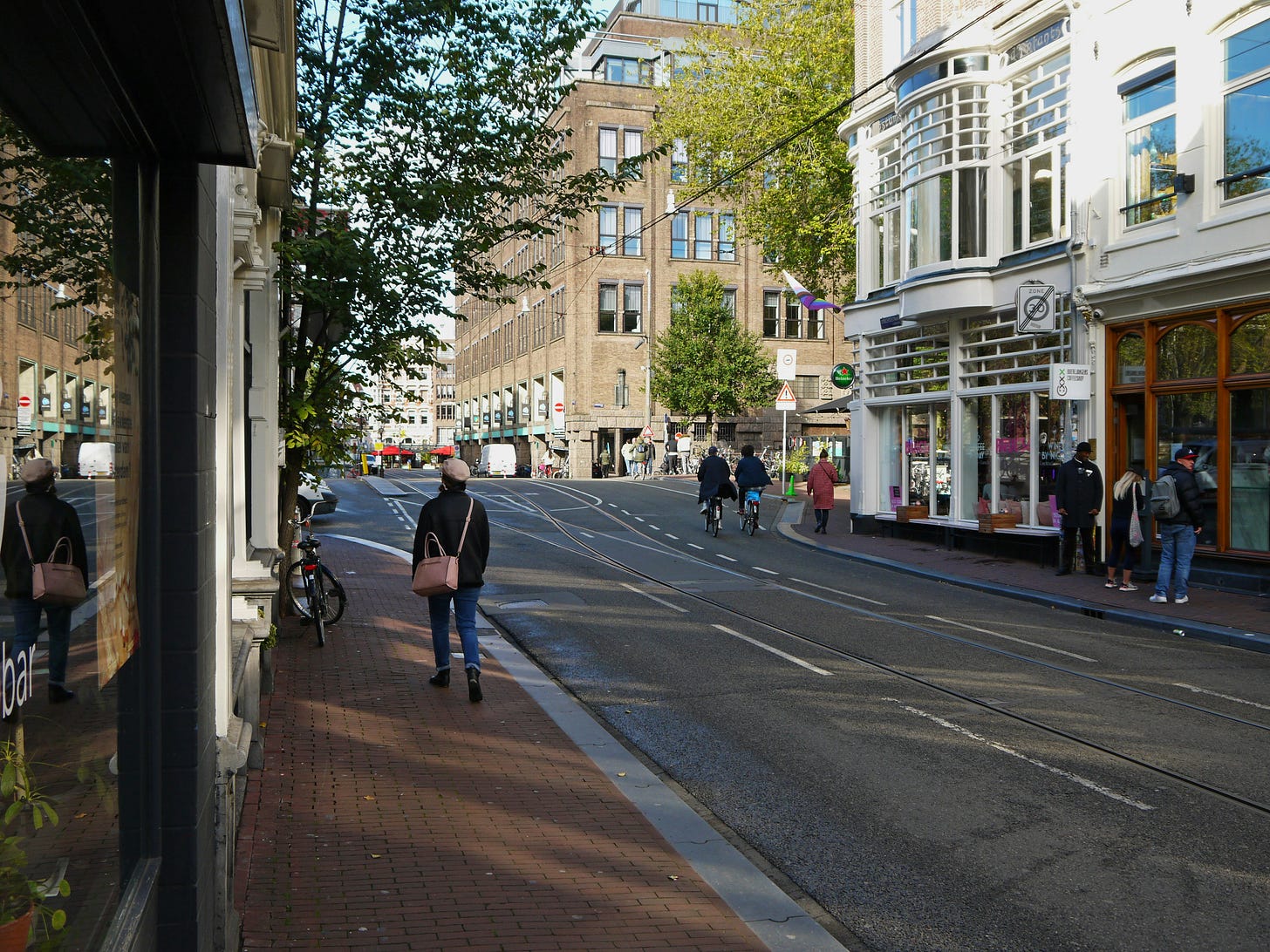Mental Framework 5: Interruptions
It’s one thing to get someone’s attention. It’s another thing entirely to keep it.
That goes for driving too.
I have been accused of being a bit squirrel prone. I am. I truly love anything shiny or new. On good days, I find everything to be fascinating—except driving down boring streets. I am the poster child for distracted driving. I don’t even need my phone to be distracted. I can do that all on my own, either internally or from looking around. (And you all wondered why my son decided he was going to be the one driving to school every day…)

If our goal is to get drivers out of their heads and looking around at what they might hit, it’s pretty important for them to have something worth looking at. I’m not talking about the new boutique down the street or that cute little chocolate shop. I’m talking about something they could have to interact with:
Another intersection
On-street parking
Someone trying to cross the street or walking alongside it, close by
Terminated viewsheds or bends in the road that block you from seeing forever
Lots of small storefronts to go by (not just the one chocolate shop—though that’s pretty compelling)
Tall buildings and open areas next to them at the intersection
You would think that the traffic itself would work, but that can function as another distraction from the pedestrians and bicyclists that we’re trying to support in an urban space.
Speed, Acceleration, and Jerk(s)
There’s a whole line of driver psychology that can tell of you’re an aggressive driver or a relaxed driver just from your vehicle movement patterns. The car insurance companies love it. They put an accelerometer on your car or use the one on your phone and track your speed, acceleration, and jerk (how fast your acceleration changes). People who use a lot of gas and brakes are usually more likely to be in crashes.
It turns out that people are terrible at estimating their speed and not great at feeling their acceleration. It’s only when they change their acceleration that they notice—and that’s called jerk. You can run a simulation in a stationary box and make people think they’re careening around a curve by how fast you jerk the box around.
If you track vehicle trajectories—and most cars with any automation do—and look at where those jerk spikes occur, it’s a great indication of where drivers are having problems. Crash rates are usually a lot higher in those places. It’s like being in white-water. Smooth flow is safe flow, whether that’s fast or slow. Between fast and slow, there’s a turbulent flow area that makes everything very unpredictable.
Mean Streets
In our research, we looked at the driving style research and realized that it’s probably more important to classify the roadway than an individual driver. In other words, is this a boring street or a mean street—the type of place that requires the driver to actively pay attention and respond. Some places just get a lot more movement than others. That might be good if the street keeps the drivers on their toes without overstressing them. If there’s a bunch of jerk spikes in the middle of a very smooth area, like a highway, the crashes go through the roof. We’ve known for a long time that distracted or tired drivers are all over the road—but that’s because they’re bored or falling asleep. Right in the middle, drivers are pretty steady, but we guessed that movement would pick up again when you get to urban places that require a bunch of interaction. In fact, it might be a great way to indirectly measure the driver’s workload. As they have to process more information, drivers don’t feel particularly unsafe, but they may be moving their car around a lot more. That we can measure.
So we did. I had my team tabulate speed, acceleration, and jerk at our study locations. We found that drivers are moving around a lot more on surface streets than on busy highways. That seemed obvious and we knew that the more urban the setting was, the more likely that drivers would be moving around even more. So we looked at what features would make a difference.
The features that floated to the top were all associated with human presence, but when we looked at all of the measures that mattered, there was a more important pattern:
Each of them also described how quickly the environment changes as you move along the corridor:
Doorway density is a good proxy for human activity, but when you have a lot of doors spaced closely together, you’re seeing something interesting a lot more frequently.
Block length is usually small in walkable areas—it helps people get around without having to walk out of their way very far. But short blocks also mean that drivers see intersections more often as they drive down the road.
Walkscore measures whether there’s anywhere to go within walking distance, but a high Walkscore also means that the land use types change frequently.
Aspect ratio is the height of the buildings divided by the distance between them. It’s a good proxy for density, but density can also mean blank walls. However, as you drive down a corridor through a canyon of towers—especially in the north/south direction, the lighting changes get extreme when you hit the intersections.
Sight distance: This doesn’t seem to have as much to do with people, but if your sight distance is always short, then your viewshed is constantly changing.

So it appears that the types of environments that generate more engaged attention have lots of interruptions-both to the vehicle’s operations (stops and starts) and in terms of the visual changes that the driver experiences as they move down the street.
People will catch driver’s attention, but If you want to keep it, you’ll need to keep giving them something to come back for—kinda like blogging.
Of course, every response they need to make adds to their workload and workload determines speed—which is the next of the Mental Frameworks. You’ll have to come back next week for that one.
In the early part of the week I’m going to post about the BrickWorld workshop we held last night. It was an absolute blast!!!



